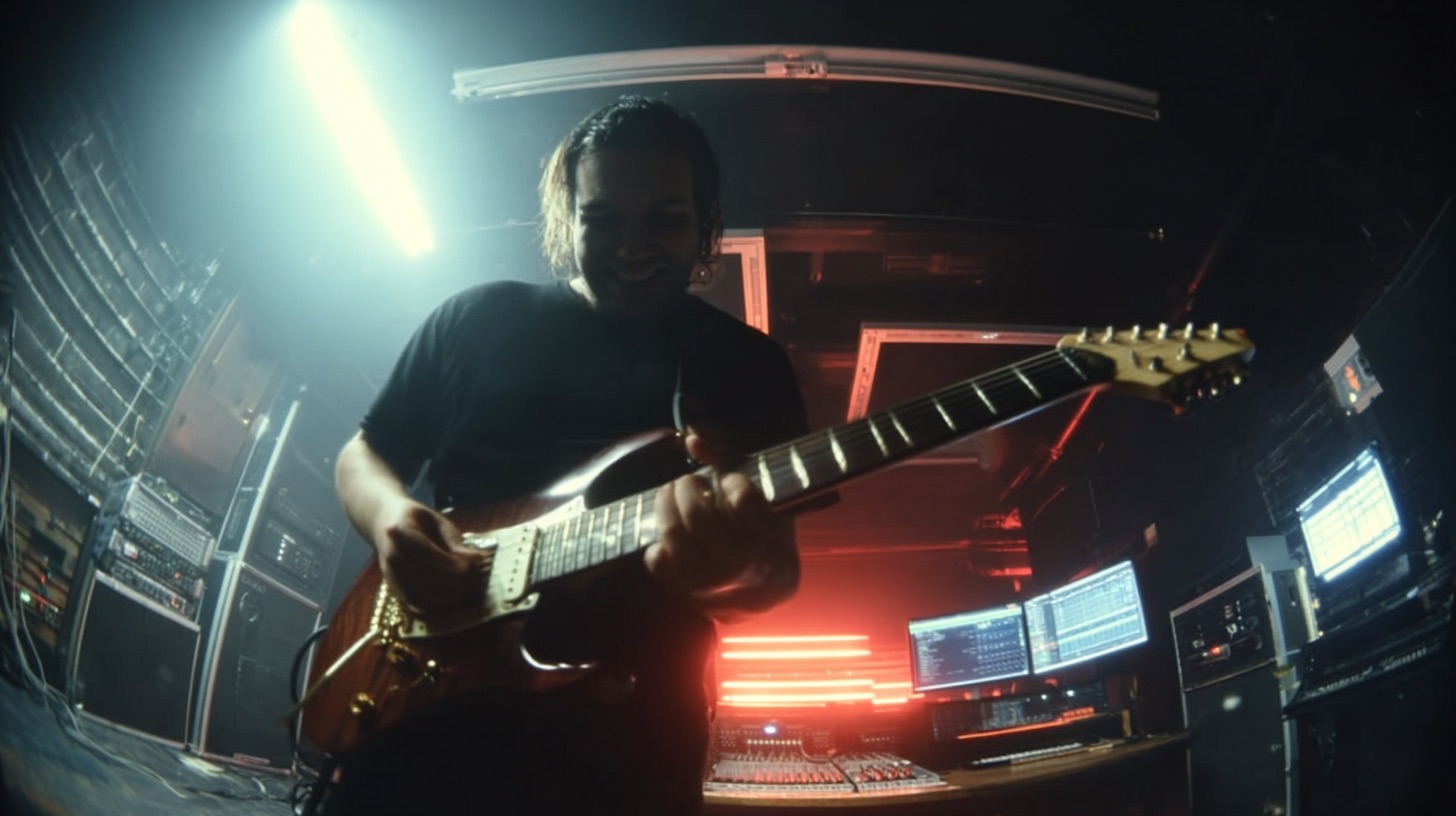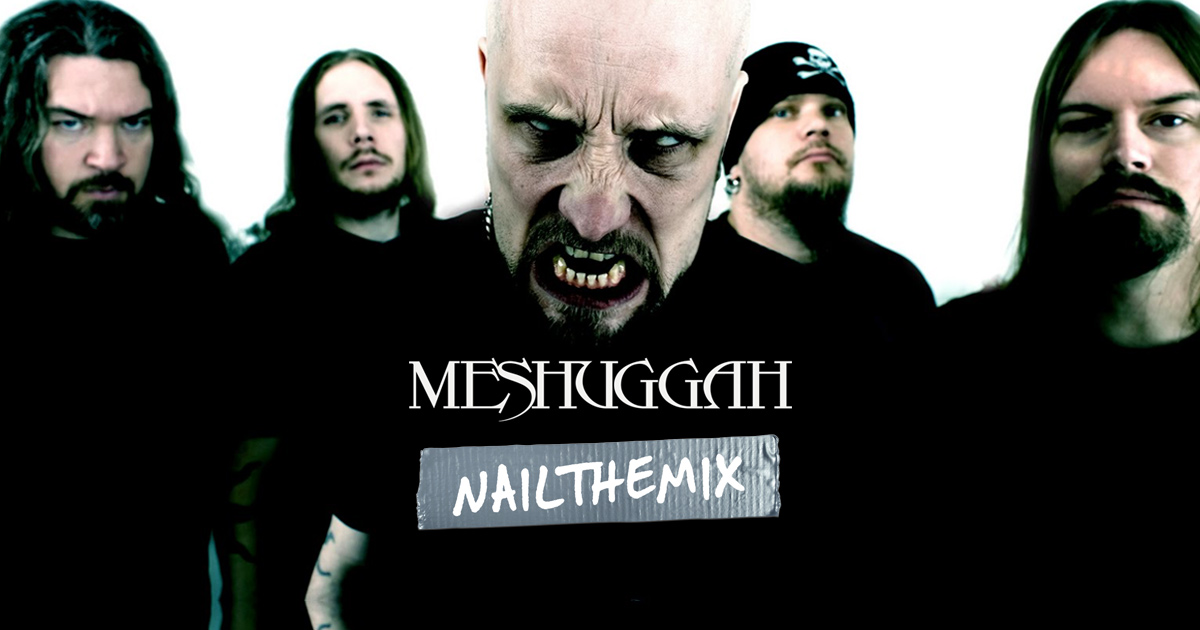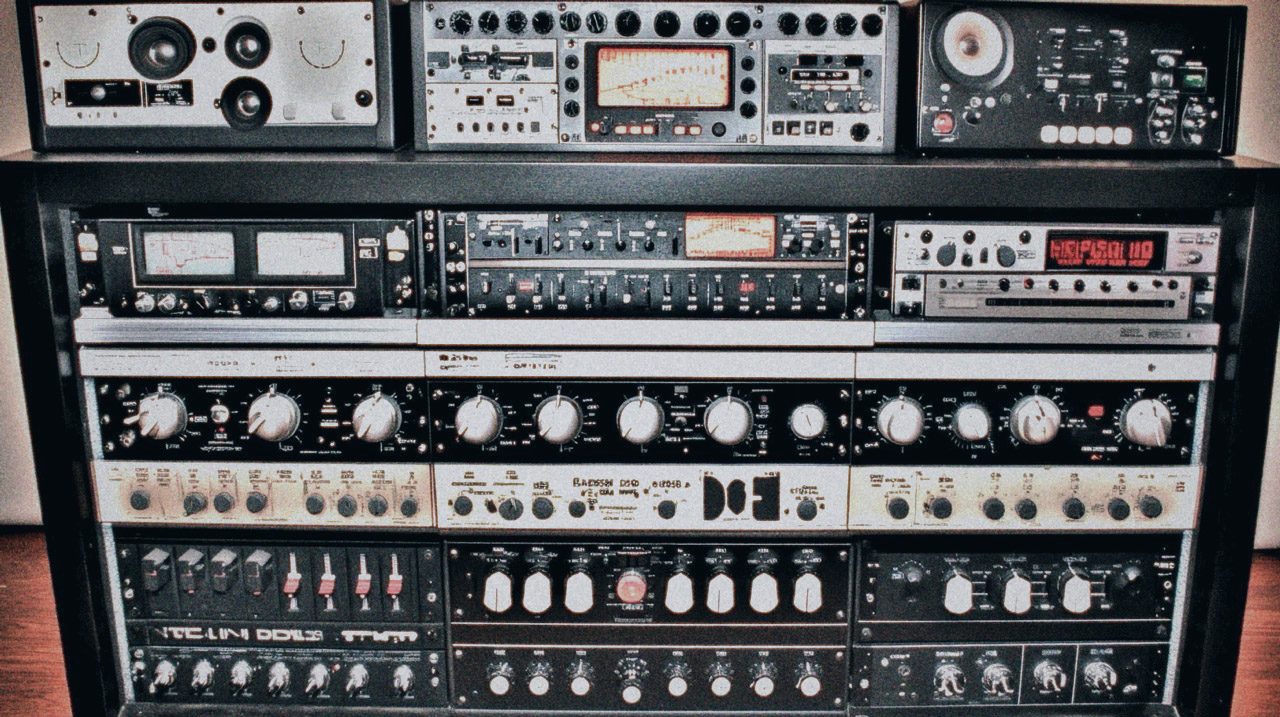
Deconstructing the Massive Sylosis Sound with Josh Middleton
Nail The Mix Staff
The sound of Sylosis is an absolute force of nature. It’s dense, technical, and aggressive, but also surgically precise. When you hear a track like “Poison for the Loss,” you can’t help but wonder how mixer and guitarist Josh Middleton manages to build such a colossal yet clean mix.
Lucky for us, we got to pull back the curtain and unbox the raw, 64-track session. We’re going to break down some of the key production and engineering techniques used to capture this monster performance, from the insane wall of guitars to the sprawling drum kit. Let’s dive in.
Building the Unstoppable Wall of Guitar
Right off the bat, the guitar folder is packed. This isn’t just a simple left/right setup; we’re talking about a heavily layered, quad-tracked performance designed for maximum width and power. But the real magic is in how those tones were captured.
The Art of Blending Mics for Maximum Tone
Instead of relying on a single mic, Josh opted to blend multiple microphones on the guitar cabs. In the session, we can see they’re using different mics, including a Sennheiser MD 421, likely paired with other classics to capture a full-range sound.
This technique is a game-changer for a few reasons:
- Tonal Variety: Each mic has its own character. One might capture the aggressive, punchy midrange while another grabs more of the low-end body or high-end sizzle. Blending them gives you a composite tone that’s far more complex and rich than what a single mic could achieve.
- Fine-Tuning Control: By adjusting the balance between the different mic tracks, you can essentially EQ the guitar tone right at the source, shaping the sound before you even touch a plugin.
The Phase Challenge
Of course, using multiple mics on one source introduces a critical challenge: phase. If the mics aren’t perfectly in phase, certain frequencies can cancel out, leaving you with a thin, hollow sound. When you get these tracks, one of the first things you should do is check the phase relationship between the blended mic tracks and nudge them into perfect alignment. The reward is a guitar tone that’s thick, powerful, and jumps out of the speakers.
The “Less Is More” EQ Approach
Here’s a key piece of advice for this session: the raw guitar tones are already incredible. They are so well-recorded that it’s incredibly easy to go too far with processing and actually make them sound worse. The challenge here isn’t to fix a bad tone, but to tastefully enhance a great one. Don’t just slap on your usual EQ curves; listen carefully and make small, surgical moves. If you find yourself needing to do more than a few minor tweaks, you might be overdoing it. Smart metal guitar EQ is about knowing when not to turn a knob.
Adding Texture with Fuzz
Digging deeper into the session reveals another cool production trick: a dedicated fuzz guitar track. Tucked underneath the main high-gain rhythm parts, this fuzz track adds a unique layer of grit and saturation. It’s not meant to be heard on its own but blended in just enough to add harmonic complexity and low-mid power without turning the main rhythm tones to mud.
Engineering a Modern Metal Drum Arsenal
With 25 tracks dedicated to drums, this is a seriously detailed setup. The drums sound phenomenal right out of the box, engineered for maximum impact and clarity, even at a blistering 202 BPM.
A Multi-Overhead Strategy for Cymbal Clarity
This is one of the most interesting parts of the session. Instead of a single pair of overheads, this kit was captured with multiple sets. There’s a high pair capturing the overall picture of the kit, but there are also four additional, individual overhead mics.
Why do this? On a massive kit with lots of cymbals, a single stereo pair can sometimes result in certain cymbals sounding distant or weak. By placing “spot” overheads over specific cymbal clusters, you get targeted, direct sound from every piece of the kit. This gives the mixer ultimate control to balance the cymbals perfectly, ensuring every accent and crash cuts through without turning into a washy mess.
The Foundation: Kick, Snare, and Samples
The core of the kit is just as meticulously recorded. The kick features a multi-mic setup with a Shure Beta 91A inside and a FET condenser outside, while the snare uses the classic SM57 top/bottom combo plus a condenser.
Crucially, the session also includes pre-made trigger samples for the kick and snare. This is a staple of modern metal production, allowing you to blend in samples for unparalleled consistency and punch, ensuring the drums hit hard through every section of the song.
Committing to the Sound: Vocals and Production FX
One philosophy that’s clear throughout this session is commitment. Many of the key sounds were dialed in and printed during the recording and production stages, leaving no room for guesswork in the mix.
Baked-In Vocal Compression
The lead vocal tracks are delivered with heavy compression already applied. This is a bold move that defines the aggressive, in-your-face character of the vocals. Instead of trying to recreate that vibe with a bunch of plugins, the sound is already embedded in the audio. It’s a great lesson in how powerful compression can be when applied with intent.
The Power of Printed Effects
You won’t find yourself trying to recreate specific vocal throws or production effects from scratch. Why? Because they’re already printed as separate audio tracks. Elements like dive bombs, transitions, and delay throws are all there, ready to be placed in the mix. This ensures the producer’s original creative vision is perfectly preserved and makes the mixer’s job easier.
Mix It Yourself and Learn from the Pro
Reading about these techniques is one thing, but applying them is how you truly learn. These are the exact, professionally recorded multi-tracks that you get full access to when you sign up for Nail The Mix.
Sylosis on Nail The Mix
Josh Middleton mixes "Poison For The Lost"
Get the Session
You can take on the challenge of mixing this beast of a song yourself. See if you can perfectly align those guitar mics, balance the intricate web of drum overheads, and make everything sit in a punishing, professional-sounding mix.
When you join, you not only get the multi-tracks but also get to watch an 8-hour livestream where the man himself, Josh Middleton, mixes “Poison for the Loss” from scratch, explaining every single move he makes. It’s an unparalleled look into how to mix modern metal and achieve world-class results.
Ready to take on the challenge and learn from one of the best in the genre? Download the raw Sylosis multi-tracks and watch Josh Middleton work his magic, exclusively at Nail The Mix.
Get a new set of multi-tracks every month from a world-class artist, a livestream with the producer who mixed it, 100+ tutorials, our exclusive plugins and more
Get Started for $1





